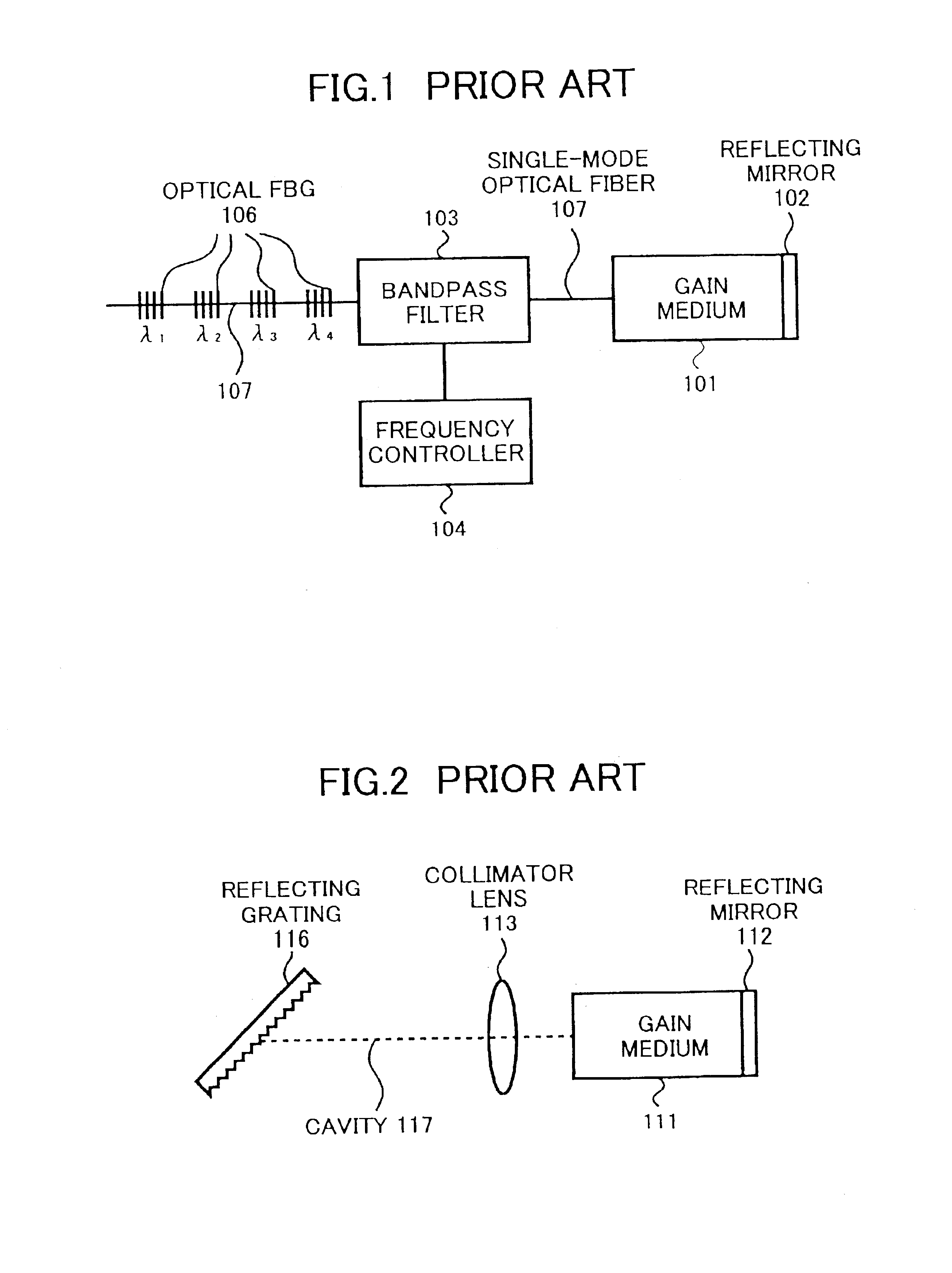Wavelength-selectable laser capable of high-speed frequency control
a laser and wavelength technology, applied in the direction of laser details, laser optical resonator construction, optical resonator shape and construction, etc., can solve the problems of requiring a large mechanical configuration in size for wavelength tuning, requiring a complicated and expensive tuning device, and requiring a large mechanical configuration in size, so as to achieve maximum efficiency, minimize the effect of beating signal and maximize the efficiency of polarization mode conversion
- Summary
- Abstract
- Description
- Claims
- Application Information
AI Technical Summary
Benefits of technology
Problems solved by technology
Method used
Image
Examples
first embodiment
[First Embodiment]
FIG. 3 is a block diagram showing a wavelength-selectable laser according to a first embodiment of the present invention.
According to the wavelength-selectable laser of the first embodiment, a cavity 10 serving as a laser resonator is formed between two reflecting surfaces, i.e., a partially transmissive (semi-transmissive or half) mirror 2 and a reflecting mirror 6. The two reflecting surfaces include at least one semi-transmissive mirror so as to extract a laser beam from the cavity 10. A single-mode optical fiber is connected to the output side of the semi-transmissive mirror 2.
A gain medium 1 for generating optical energy and a solid-state tunable bandpass filter 3 are provided in the cavity 10. The optical energy is generated in a semiconductor optical amplifier (SOA) in the gain medium 1 so as to be distributed typically over a broad frequency range of approximately 100 nm. The bandpass filter 3, which is equivalent to the above-described first bandpass filte...
second embodiment
[Second Embodiment]
An RF signal fs for causing mode conversion (switching) is applied to the AOTF 3. Supplying the RF signal fs and controlling its frequency correspond to the frequency controller 4.
A description will be given of a method as to how the RF signal frequency fs can be controlled to the optimum value.
FIG. 12 is an enlarged view of the AOTF 3. In the AOTF 3, an inter digital transducer (IDT) 214 is formed on a light waveguide 216 formed on the surface of a LiNbO3 substrate by diffusing Ti ions thereon. When the RF signal is applied to the IDT 214, the medium is excited so as to have condensation and rarefaction corresponding to the RF signal, so that an SAW propagates on a field waveguide 218 on the light waveguide 216. As a result, the polarization mode of the propagating light is converted from TE to TM or TM to TE by the interaction between the SAW and the propagating light. This mode conversion occurs with respect only to light of a specific wavelength corresponding ...
PUM
 Login to View More
Login to View More Abstract
Description
Claims
Application Information
 Login to View More
Login to View More - R&D
- Intellectual Property
- Life Sciences
- Materials
- Tech Scout
- Unparalleled Data Quality
- Higher Quality Content
- 60% Fewer Hallucinations
Browse by: Latest US Patents, China's latest patents, Technical Efficacy Thesaurus, Application Domain, Technology Topic, Popular Technical Reports.
© 2025 PatSnap. All rights reserved.Legal|Privacy policy|Modern Slavery Act Transparency Statement|Sitemap|About US| Contact US: help@patsnap.com



